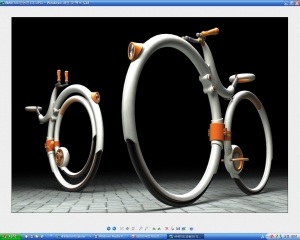
The 44th Korean Design Exhibition opens a gateway for young, aspiring and promising designers to an eco-friendly world, and their designs promise to clear the way for a more human-centered society.
“Creating designs is a part of our efforts to seek delight in life. We thought of the environment when we tried to do some good work to add momentum to our pursuit of delight. In this process, we came to design an eco-calendar,” said Yoon Young-ro and Yoon Kwan-soo, the co-winners of the Presidential Prize of the 44th Korean Design Exhibition.
These two young designers won the top prize at the annual national design exhibition, a design show hosted by the Korean Institute of Design Promotion (KIDP), a government-funded design promotion agency under the Ministry of Knowledge Economy. A ceremony was held to open this year’s show at the KIDP building in Bundang, Seongnam, Gyeonggi Province on Thursday, June 25, with the attendance of Lim Chae-min, vice minister of knowledge economy, and Park Young-soon, chairwoman of the Korea Federation of Design Associations.
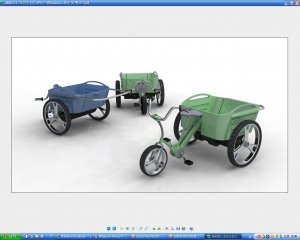
Highlighting the importance of industrial design, Lim said in a congratulatory speech, “Design is a leading knowledge-based service industry. It is essential to enhance competitiveness of products and values of corporate brands in the global market.”
To recruit outstanding design personnel, he promised to give unsparing support to the industry in training professional designers and discovering talented rookies. He, then, said the government will make efforts to emerge as a global design power by helping design firms to cultivate their total design capability and make inroads into overseas markets. The exhibition was held for a week concluding on July 1.
The presidential prize winning design is an eco calendar featuring Korea’s ornithological natural treasures, or endangered birds, designed in the image of matchboxes to convey a message for preserving endangered birds. This eco-friendly work stands out as it focuses on trying to remind everybody of the environmental disasters by which birds are losing their nests and habitats in the wake of wildfires caused by human carelessness.
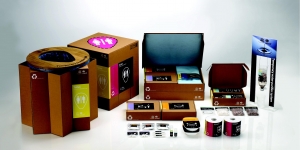
The annual national design show is Korea’s most prestigious design event that opens a gateway for many of Korea's most talented designers to achieve their own fame and help forge an eco-friendly world. It is open to students, corporate designers and free lancers. It is a forum for designs of innovative ideas. As it showcased the “Low Carbon, Green Growth” vision set forth by the government, this year’s event attracted many eco-friendly designs created with a focus on user accessibility and convenience.
For this year’s competition, a total of 2,409 entries, the largest number ever, were submitted and 19 works were selected as winners of major prizes – one Presidential Prize, two Prime Minister Prizes, 11 Minister of Knowledge Economy Prizes, and five Minister of Education, Science and Technology Prizes. A majority of the winning works are based on eco-friendly designs, including the aforementioned presidential prize-winning design featuring endangered birds of Korea and a prime minister’s prize-winning design of furniture for children’s libraries by Kim Min-joon.

Most of the works were created using eco-friendly and organic materials. What is notable about this year’s event is the designers’ care for and attention to safety of designed objects as well as the public nature of designs, user-friendliness, and their emphasis on taking their own role in society.
In a meeting with reporters, Park Kang-ryong, a professor of visual design at Dankook University, chairman of the screening panel for the 2009 design event said, “I hope that designers’ imaginations about user-friendly products will contribute to building a world where the Korean people can gain emotional satisfaction with such products.”
Some members of the panel also made encouraging comments on the show. A member said, “For this event, many eco-design works using various interfaces were submitted under the theme ‘Low Carbon, Green Growth,’ a global paradigm.“ “Besides eco-design-based crafts, I can find many works focusing on safety and public consideration. It’s worth mentioning those works that give careful attention to users. Many foreigners are also surprised to see Korean designs with such a careful touch and Oriental exquisiteness,” said another member.
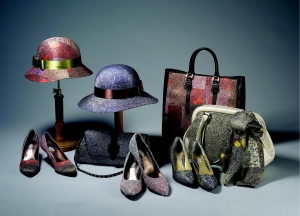
Many designers made efforts to take the government’s “Green New Deal” policy into consideration. At a glance, 23 percent of the winners of major prizes were based on the ubiquitous theme of “Low Carbon, Green Growth.” For example, the panel members set their eyes on bicycle-related designs, considering bicycles’ emergence as a new favorite transportation means or fitness and recreation equipment. Bicycle designs featuring novel ideas drew visitors’ attention, including a portable bike, a self-powered electric tricycle, and a multi-functional bike. These designs are believed to have lingering positive effects on expanding the bike population in the future.
A self-powered electric tricycle designed by Cho In-soo, who won the KIDP President’s Prize, features a mini pickup that can be used in rural areas. “Oxcycle” designed by Park Sung-bin and Koh Pyung-joo focuses on the pedaling function of the bicycle by installing an oxygen generator. “Bicycle Shelter” is designed by Cho Kyung-deuk and Yoon Se-il. Its concept is to provide shelters or resting places for bike riders along bike paths to be built across the country, with focus on a master plan for a Tour de Korea in connection with the government’s four rivers project and its “Low Carbon, Green Growth” vision.
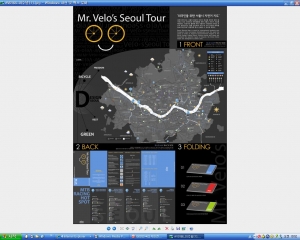
Another attraction is the display of designs for the people with mental and physical disabilities as well as the underprivileged. This section’s theme is “Universal Design” aimed at helping these people overcome their physical weaknesses or handicaps that can occur as they age or under other certain circumstances. This design is aimed at making products human-centered, as opposed to what everybody had in the past when everything was standardized and only economic efficiency was emphasized.
A recyclable bottle cap designed by Park Dong-hyuk and Choi Du-sun is for visually handicapped people. The bottle cap carries Braille signs to help the visually handicapped identify its content without having to smell to find out what is in it. What drew our attention was a set of colored pencils designed by Roh Ji-hoon and Lee Kyung-kook under the theme “touch your colors.” Unlike ordinary colored pencils, each of these specially designed colored pencils has a different shape, so that visually handicapped children aged 8 or younger, who cannot read Braille signs, can identify each colored pencil without other people’s help. Another noteworthy item is “Navi Stick” designed by Yoo Ho-jin as an electronic walking cane for the visually handicapped. With this specially designed Braille cane, they can navigate roads with relative ease because the navigation sensor in the cane conveys road information to its holder through sound, vibration and Braille signs.
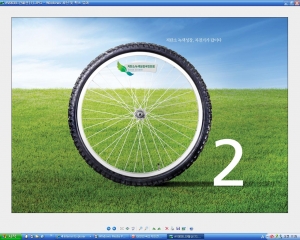
All such environmentally-friendly designs were submitted under the theme of “Good Design” initiative, which seeks both economic growth and environmental preservation through an eco-friendly production process that emits no harmful pollutants and wastes no energy. The “Good Design” initiative aims for sustainable architecture and eco-management, and assesses the lifecycle of energies, products and services.


